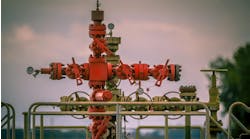By Alyssa Edmunds
The recent California wildfires have caused unimaginable destruction and loss. This disaster has much of the country wondering what to do. Unfortunately, the science behind them is largely unknown, making stopping them extremely difficult. As climate change continues, hot weather and droughts become more frequent thus making larger and more intense wildfires more likely.
According to atmospheric chemist Carsten Warneke of the National Oceanic and Atmospheric Administration (NOAA), wildfire smoke is a main concern regarding air quality and climate going forward. In fact, by 2050, a 57% increase in the number of smoke waves will affect more than 80 million people. This can cause major health issues, especially for people with pre-existing lung problems.
On the bright side, for the next two years, two projects— one funded by the National Science Foundation (NSF) and the other funded by NASA and the NOAA — are researching the chemistry and physics of wildfires and the impact that they have on climate, pollution and health. Both projects strive to fly through the wildfires to obtain samples of organic compounds, like nitrogen oxides and carbon monoxide that wildfires release in order to understand the chemistry behind wildfires because the current models scientist use to predict the chemical makeup of smoke emitted from these fires have very large margins of error.
Many chemical companies care deeply about environmental issues and have done philanthropic things to help those affected by the tragedy that wildfires cause. According to a recent press release, Chevron has donated $1 million to support those devastated by the recent California wildfire and this is not the first time they’ve made such a generous donation. In years’ past, the Chevron Global Community Fund has donated more than $2.5 million, specifically for wildfire relief in California. Not too long ago, when a wildfire ravaged Sonoma County, California, BASF announced that they donated $10,000 to the Sonoma County Grape Growers Foundation’s Ag Employee Wildfire Relief Fund to aid farmers who suffered economically due to the burning of their crops and homes. Similarly, Dow Agrosciences, a subsidiary of Dow Chemicals, helped ranchers recover from a wildfire by donating to three different foundations for ranchers and farmers, according to a press release. Not all the companies donating are even directly affected by the wildfires, their altruistic aid is solely due to good corporate citizenship and care for good air quality.
While sometimes it may seem that there is nothing we can do to reverse the effects of climate change, because of the hard work of scientists, there is hope. Even if you are not directly involved in any organizational effort to protect the environment, you can still do environmentally friendly things like recycle and reduce your emissions.
[javascriptSnippet ]



